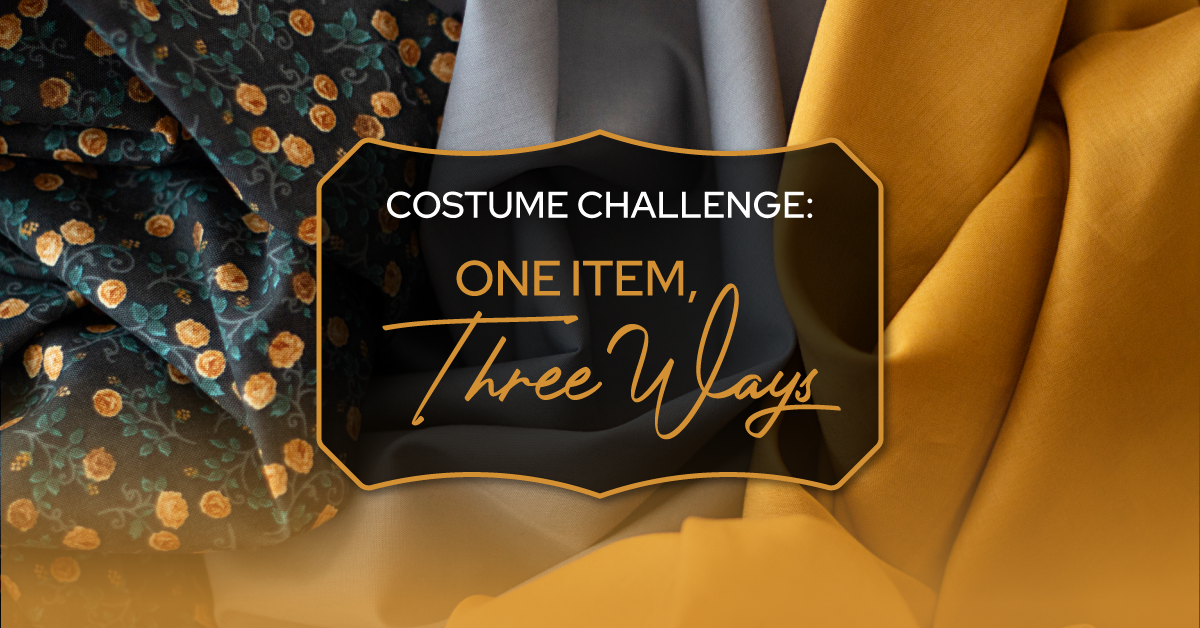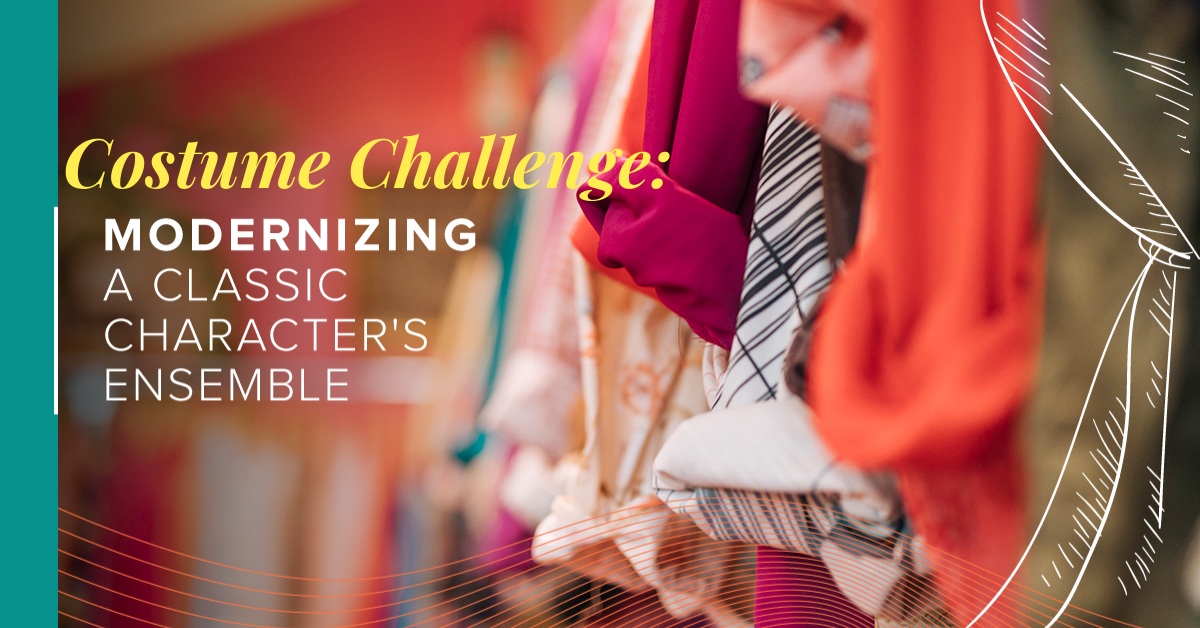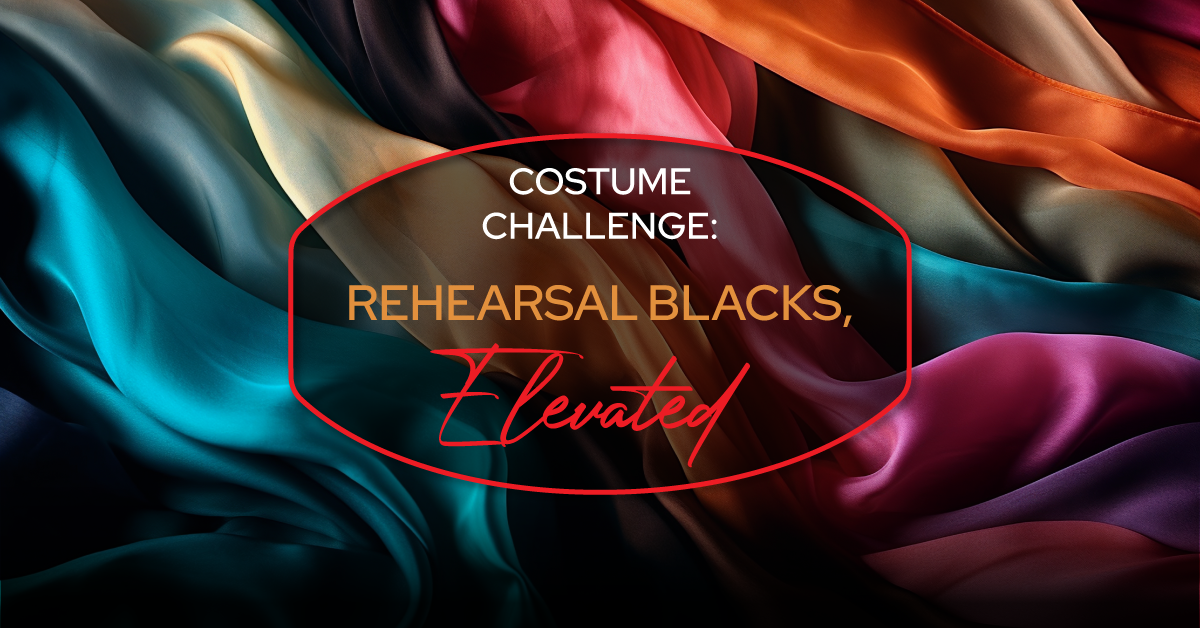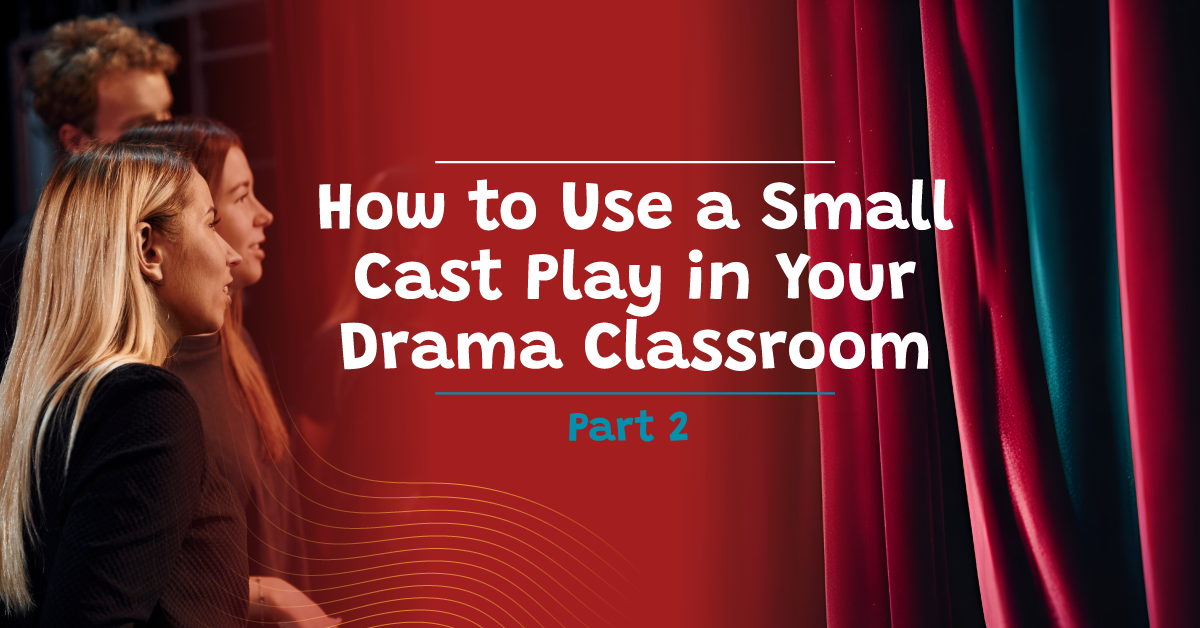Agatha Rex by Lindsay Price is a bold high school take on Antigone - packed with heart, conflict, and a powerhouse ensemble. One girl. One stand. One huge risk. *NEW COMPETITION VERSION AVAILABLE!*
Costume Challenge: One Item, Three Ways
In our last post, we challenged students to create elevated costume looks using only black clothing and accessories. This time, we’ll have one costume item and challenge students to style it differently to create various looks. In short, how can students use one item in many different ways? This exercise is useful to show students how they can create different, interesting looks using very little. Going forward, students can use this experience to help them costume a show on a budget, because when you use multi-purpose items, you don’t have to spend as much money.
This exercise works best with groups of three. Each student will get the chance to be the costume head, the assistant, and the model.
The exercise is done in three rounds. You’ll need enough costume items so each group has an item to work with. The colour and pattern of the items doesn’t matter. For the first round, each group will need a large piece of rectangular or square fabric, such as an oversized scarf, a sari, a bedsheet, or a towel. For the second round, each group will need a large piece of clothing, such as an oversized hoodie, a long dress (preferably made of an easy-moving fabric such as cotton or jersey), or a similar oversized, billowy clothing item. For the third round, each group will need a pair of shoes with laces. It’s up to you whether you keep the costume items a surprise or reveal them to the groups in advance.
Instructions
1. Have each group determine who is Partner A, Partner B, and Partner C.
2. For the first round, Partner A is the costume head, Partner B is the assistant, and Partner C is the model.
3. Partner A will receive the first round costume item — a large piece of fabric. Over the top of Partner C’s clothes, Partner A needs to manipulate and style the fabric to create three different costume looks. They can fold, scrunch, wrap, twist, and otherwise manipulate the fabric to make different styles or items — just don’t rip or cut the fabric. For example, the fabric might be tied around the model’s waist to create a wrap skirt or beach coverup, tied around the model’s neck to use as a cape, or wrapped around their arm or leg to use as a sling. As the assistant, Partner B is there to provide help and take a digital photograph of each look to submit to the teacher.
4. Once they have styled the fabric in three unique ways and taken the photographs, the group can neatly fold the fabric and return it to the teacher, and then move on to the second round.
5. For the second round, Partner B is the costume head, Partner C is the assistant, and Partner A is the model.
6. Repeat Step 3 with the second round costume item — an oversized hoodie, long dress, or similar large, billowy item. Again, no cutting or ripping the item. This round will be a bit different because, in contrast to the plain piece of fabric, the hoodie or dress will have a definite shape and different features, such as sleeves and pockets. For example, the hoodie could be worn as it usually is (as a shirt), tied around the waist for a casual look, and then tied around the neck for a preppy look. Students might fold the hoodie into a hat, using the sleeves to tie it to the model’s head or create interesting details. The long dress might be shortened by tying knots around the edge of the fabric, or worn as a skirt or an off-shoulder dress with the bodice tucked down at various points on the body.
7. Once Partner B creates three different looks and Partner C photographs, the items are to be neatly folded or hung up, and returned to the teacher for the third and final round.
8. For the third round, Partner C is the costume head, Partner A is the assistant, and Partner B is the model.
9. Repeat Step 3 with the third round costume item — a pair of shoes with laces. This item poses a challenge because it’s unexpected and doesn’t provide much coverage. If your students have played the theatre game Props, have them think about the shoes in the same way. Where on the body could the shoes be worn, other than on the feet? The shoes could be tied to the model’s head like a hat or fascinator, worn on their hands like puppets, or worn as a scarf or necklace by tying the laces together and draping them over their shoulders. If students are stumped, how could they style the shoelaces in three different ways?
10. Once Partner C creates three different looks and Partner A photographs, they can return the items to the teacher. All group members will complete and submit an individual reflection (found below) as well as submit their three photos.



